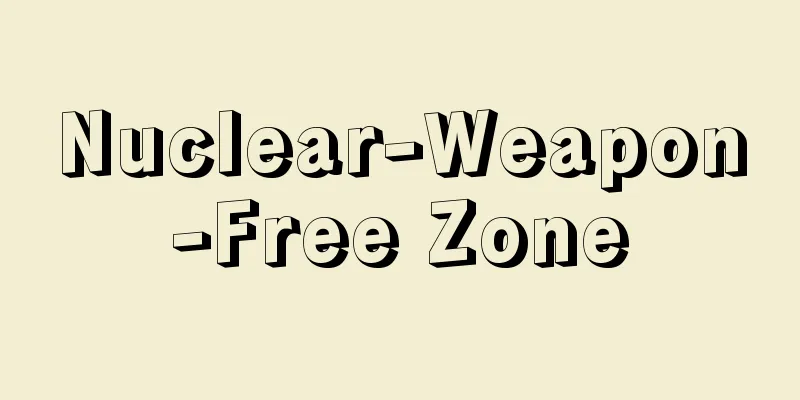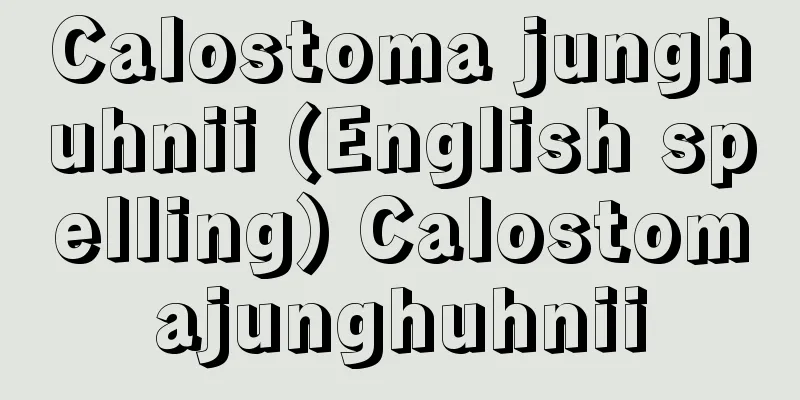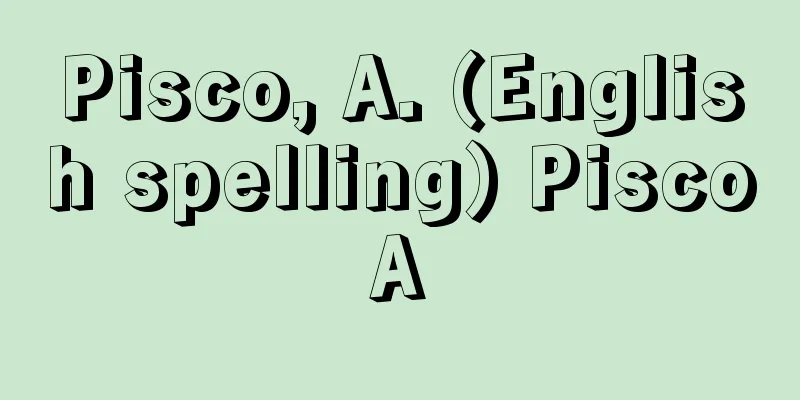Nuclear-Weapon-Free Zone

|
A 1975 United Nations General Assembly resolution defined the NWFZ as a zone whose boundaries were determined by an international treaty, which was guaranteed to be free of nuclear weapons, where an international control and verification regime was established to ensure compliance with obligations, and where nuclear-weapon states were prohibited from using or threatening to use nuclear weapons against the zone through protocols and other measures. In the 1950s, the Soviet Union made many proposals for a NWFZ covering Central Europe, the Adriatic Sea, the Mediterranean Sea, the Pacific Ocean, and other areas. All of these were heavily political propaganda-tinged in the context of the East-West conflict, but the proposal by Polish Foreign Minister Rapatzki (Rapatzki Plan, 1957) attracted attention as one that seriously aimed to realize the idea. This plan covered East and West Germany, Poland, and Czechoslovakia, and included a prohibition of nuclear weapons in the region, as well as an obligation of nuclear weapon states not to use nuclear weapons against the region, and a specific concept of a monitoring system. However, although amendments were made twice through subsequent discussions, they were not accepted by the West and were not realized. The interests and aims of the NWFZ have changed over the years. In the 1960s, a NWFZ covering a wide area of the Southern Hemisphere was conceived as an attempt to separate the country from the East-West conflict. Representative examples include the Resolution on the Denuclearization of Africa (1961), proposed by African countries that felt alarmed by the French nuclear tests in the Sahara Desert in 1960, and the Declaration on the Denuclearization of Africa (Cairo Declaration, 1964) by the first summit of the Organization of African Unity (OAU). Although these proposals covered the whole of Africa, they were not legally binding because they were General Assembly resolutions and unilateral declarations. The other proposal was the NWFZ proposal, which covered the whole of Latin America and the Caribbean, and was initiated by Latin American countries that felt the threat of nuclear war firsthand during the Cuban Missile Crisis (1962). In February 1967, they reached an agreement on the Treaty on the Prohibition of Nuclear Weapons in Latin America (commonly known as the Treaty of Tlatelolco), the first inhabited region in history. In 2002, all 33 countries in Latin America and the Caribbean completed signing and ratification. The First Protocol, which covers France, the United Kingdom, the Netherlands, and the United States, which have territories or dependencies in the region, and the Second Protocol, which covers the five nuclear-weapon States, have also been ratified and are in force by all the nuclear-weapon States. In the 1970s, when concerns about nuclear proliferation in the Third World grew, proposals for a Middle East or South Asia NWFZ were proposed at the UN General Assembly and elsewhere, but none were realized due to severe conflicts of interest between countries in the region. The Middle East NWFZ proposal, which would check Israel's secret nuclear weapons capabilities, has been continuously proposed by the Arab world to this day, but at the 1995 Nuclear Non-Proliferation Treaty (NPT) Review and Extension Conference, a resolution was adopted at the suggestion of the United States, the United Kingdom, and Russia that referred to the establishment of a zone free of weapons of mass destruction in the Middle East. Furthermore, at the NPT Review Conference in May 2010, it was agreed that an international conference to implement this Middle East resolution would be held in 2012, but as of June 2019, this has not been realized. The United States is opposed to taking up the Middle East issue at the NPT Review Conference. Moves towards realizing the NWFZ concept began in the mid-1980s. The first to take action was the South Pacific Forum (SPF, now the Pacific Islands Forum, or PIF), which was concerned about the ocean dumping of radioactive waste from nuclear testing and nuclear power generation by the United States, the United Kingdom, and France, and adopted the Treaty on the South Pacific Nuclear-Free Zone (commonly known as the Treaty of Rarotonga) in August 1985. (It came into force in December 1986, and as of 2017, 13 of the 16 countries and regions are members. The First Protocol, which applies to France, the United Kingdom, and the United States which have dependent territories, the Second Protocol, which applies to the five nuclear-weapon states, and the Third Protocol, which bans nuclear testing, are in force for all other countries, although the United States has only signed but not ratified them.) This set a precedent, and two NWFZs were established in 1995 after the end of the Cold War. One was the African Nuclear-Weapon-Free Zone Treaty (African Nuclear-Free Zone Treaty, commonly known as the Pelindaba Treaty) that was adopted in June 1995 by the Organization of African Unity (OAU, now the African Union, or AU) after South Africa, which had long been suspected of developing nuclear weapons, joined the Nuclear Non-Proliferation Treaty (NPT) as a non-nuclear weapon state in 1991. It covers 54 African countries, but as of March 2019, 41 countries are members (of which the Sahrawi Democratic Republic is not a member of the UN; 13 countries have only signed). The first protocol, which prohibits the use of nuclear weapons by the five nuclear weapon states, and the second protocol, which prohibits nuclear testing by nuclear weapon states, have only been signed by the United States, but have been ratified by the others. The third protocol, which applies to France and Spain, which have dependencies, is in force in France, but not signed by Spain. In the same year, 1995, the Treaty on the Southeast Asia Nuclear-Weapon-Free Zone (Bangkok Treaty) was also signed. The Association of Southeast Asian Nations (ASEAN, then seven countries) and Laos, Cambodia, and Myanmar (now ASEAN member states), which had been pursuing a nuclear-weapon-free zone (SEANWFZ) since 1971 along with the concept of a Zone of Peace, Free and Neutrality (ZOPFAN), signed the treaty in December 1995. It came into force in March 1997, and with the ratification by the Philippines in 2001, all ASEAN countries became parties to the treaty. One of the features of this treaty and its protocol is that it applies not only to the territories of the contracting parties, but also to their continental shelves and economic zones. The protocol prohibits the five nuclear-weapon states from using or threatening to use nuclear weapons against the contracting parties and the treaty zone. China, which is in dispute with Southeast Asian countries over the sovereignty of the Spratly Islands and other islands, has raised objections to the protocol, and the United States, concerned about the impact it may have on the freedom of navigation of naval vessels, has also called for amendments. As of March 2019, no country had signed the protocol. Finally, in 2009, the Treaty on a Nuclear-Weapon-Free Zone in Central Asia (Semipalatinsk Treaty, CANWFZ), the only NWFZ in the Northern Hemisphere, was signed in 2006. Five Central Asian countries (Kazakhstan, Kyrgyzstan, Tajikistan, Turkmenistan, and Uzbekistan) issued the Almaty Declaration in 1997, aiming to establish a nuclear-weapon-free zone. The background to the creation of the NWFZ was the serious environmental pollution caused by the Semipalatinsk (Semey) nuclear test site, uranium ore mines, and smelting plants in Kazakhstan during the Soviet era. In fact, a significant part of the Almaty Declaration is devoted to environmental restoration. The treaty and protocol were agreed upon in February 2005, the signing ceremony was held in Semipalatinsk in September 2006, and it came into force in March 2009. Regarding environmental remediation, the Protocol promised to support all efforts to remediate contaminated soil, uranium residue storage sites, and test sites resulting from the past development, production, and storage of nuclear weapons and nuclear explosive devices (Article 6). The Protocol prohibits nuclear weapon states from using or threatening to use nuclear weapons. China and Russia are parties to the Protocol, as a nuclear-free buffer zone has been created between them, and Russia also has influence through the Collective Security Treaty (Tashkent Treaty, 1992, CST, institutionalized in 2004). On the other hand, the United States, the United Kingdom, and France have issues with Article 12, which stipulates that the Treaty does not affect rights and obligations under previous treaties. In other words, they were reluctant to sign the Protocol due to suspicions that Russia may deploy tactical nuclear weapons in an emergency through the Collective Security Treaty of the Commonwealth of Independent States (CIS) countries of the former Soviet Union. As of 2017, the United Kingdom and France have ratified the Protocol with reservations, and the United States has signed but not ratified it. The NFWZ was originally established to avoid being drawn into the East-West conflict, but its focus has shifted to include preventing nuclear testing, preventing radioactive waste dumping, preventing nuclear accidents, and environmental security, and it has since expanded to cover almost the entire Southern Hemisphere and into the Northern Hemisphere as well. In the complex international situation following the Cold War, the NWFZ has become increasingly significant as an important measure that contributes to stabilizing the strategic environment between nuclear-weapon states, nuclear non-proliferation, building regional confidence, and easing tensions. [Masatsugu Noie July 19, 2019] "Handbook of Disarmament Treaties" by Joseph Goldblatt, translated by Asada Masahiko (1999, Nippon Hyoronsha)" ▽ "The International Politics of the Non-Proliferation of Weapons of Mass Destruction" edited by Noie Masatsugu and Umemoto Tetsuya (2000, Yushindo Kobunsha)" ▽ "The Path to Nuclear Weapon Abolition" by Sugie Eiichi (2002/Expanded and revised edition, 2010, Kamogawa Publishing)" ▽ "The Law and Politics of Nuclear Disarmament and Non-Proliferation" edited by Asada Masahiko and Tosaki Hirofumi (2008, Shinzansha Publishing)" ▽ "Disarmament Treaty Resource Collection" edited by Fujita Hisakazu and Asada Masahiko, 3rd edition (2009, Yushindo Kobunsha) [References] | | | | | | | | |Source: Shogakukan Encyclopedia Nipponica About Encyclopedia Nipponica Information | Legend |
|
1975年国連総会決議では、国際条約により境界が確定された地帯で核兵器の不在が確保され、義務の遵守を確実にする国際的管理・検証制度が設けられ、議定書などで核兵器国の同地帯に対する核兵器の使用、使用の威嚇が禁止される地帯と定義されている。略称NWFZ。 1950年代にはソ連が、中部ヨーロッパ、アドリア海、地中海、太平洋などを対象とする多くのNWFZ提案を行った。これらはいずれも東西対立のもとで政治宣伝色が濃いものであったが、ポーランドの外相ラパツキの提案(ラパツキ・プラン、1957年)は、真剣に実現を目ざしたものとして注目された。この案は、東西ドイツ、ポーランド、チェコスロバキアを対象とし、域内の核兵器の禁止とともに、同地域に対する核兵器国の核不使用義務を規定したほか、監視制度の構想も含んだ具体的なものであった。しかし、その後協議を通じて2回にわたり修正案が作成されたが、西側の受け入れるところとならず、実現しなかった。NWFZは時代によって関心やねらいが変わってきた。1960年代には東西対立から自らを切り離そうとする南半球の広域のNWFZが構想された。代表的なものは、1960年のフランスのサハラ砂漠における核実験に危機感を覚えたアフリカ諸国が国連総会に提案し採択された「アフリカ非核化決議」(1961)、および第1回アフリカ統一機構(OAU)首脳会議による「アフリカ非核化宣言」(カイロ宣言、1964年)である。アフリカ全域を対象とするが、総会決議や一方的宣言であるため法的拘束力はなかった。もう一つは、キューバ・ミサイル危機(キューバ危機、1962)で核戦争の脅威を肌で感じたラテンアメリカ諸国が交渉を開始した、ラテンアメリカ、カリブ全域を対象とするNWFZ案である。1967年2月に人間が住む地域における史上初のラテンアメリカ核兵器禁止条約(通称トラテロルコ条約)の合意にこぎ着けた。2002年にラテンアメリカ、カリブ地域の域内33か国すべての署名・批准が完了した。この地域に属領などをもつフランス、イギリス、オランダ、アメリカを対象とする第一議定書、5核兵器国を対象とする第二議定書もすべての対象国で批准され発効している。 第三世界に核拡散の懸念が高まった1970年代には、中東、南アジアのNWFZ案が国連総会などで提案されたが、域内国の利害対立が厳しくいずれも実現しなかった。このうちイスラエルの秘密裏に保有するとされる核戦力を牽制(けんせい)する中東NWFZ案は、アラブ側から現在に至るまで継続的に提案されているが、1995年の核不拡散条約(NPT)運用検討・延長会議では、アメリカ、イギリス、ロシアの提案により中東の大量破壊兵器禁止地域設置に言及する決議が採択された。さらに2010年5月のNPT運用検討会議では、この中東決議実施のための国際会議を2012年に開催することが合意されたが、2019年6月現在、実現していない。アメリカは中東問題をNPT運用検討会議で取り上げることに反対している。 NWFZ構想が実現に向けて動きだしたのは、1980年代なかば以降である。最初に動いたのはアメリカ、イギリス、フランスの核実験や原子力発電から生じる放射性廃棄物の海洋投棄に不安を抱く南太平洋フォーラム(SPF。現、太平洋諸島フォーラム=PIF)で、1985年8月、南太平洋非核地帯条約(通称ラロトンガ条約)を採択した(1986年12月発効、2017年時点で16か国・地域中13か国・地域加盟。属領をもつフランス、イギリス、アメリカ対象の第一議定書、5核兵器国対象の第二議定書、核実験を禁止する第三議定書は、アメリカが署名のみで批准していないが、他のすべての国で発効している)。 これが先例となり、冷戦終結後の1995年に二つのNWFZが実現した。一つは長い間核兵器開発の疑惑がもたれていた南アフリカが、1991年非核兵器国として核不拡散条約(NPT)に加盟したのを受けて、アフリカ統一機構(OAU。現、アフリカ連合=AU)が1995年6月に採択したアフリカ非核地帯条約(アフリカ非核化条約、通称ペリンダバ条約)である。アフリカ54か国を対象としているが2019年3月時点で、41か国が加盟している(うちサハラウィ民主共和国は国連未加盟。13か国が署名のみ)。5核兵器国の核使用を禁じる第一議定書、核兵器国の核実験を禁止する第二議定書は、アメリカは署名のみであるが他は批准している。属領などをもつフランス、スペイン対象の第三議定書は、フランスで発効しているがスペインは署名していない。 同じ1995年に東南アジア非核地帯条約(バンコク条約)も調印にこぎ着けた。東南アジア諸国連合(ASEAN(アセアン)、当時7か国)とラオス、カンボジア、ミャンマー(現在はASEAN加盟国)は、1971年以来、平和自由中立地帯(ZOPFAN)構想とともに非核地帯(SEANWFZ)を追求してきたが、1995年12月にこの条約に調印した。1997年3月に発効し、2001年のフィリピンの批准によりASEAN諸国すべてが締約国になった。この条約、議定書の一つの特徴は締約国領域のみならず大陸棚や経済水域にも適用されることである。議定書は5核兵器国に条約締約国および条約地帯への核使用および使用の威嚇を禁止している。東南アジア諸国と南沙(なんさ)群島などの領有権を争う中国が異議を唱え、また艦船の自由航行への影響を懸念するアメリカも修正を求めており、2019年3月時点で、議定書に署名した国はない。 最後に2009年に北半球では唯一のNWFZである中央アジア非核兵器地帯条約(セミパラチンスク条約、CANWFZ)が、2006年、署名された。中央アジア5か国(カザフスタン、キルギスタン、タジキスタン、トルクメニスタン、ウズベキスタン)は、1997年にアルマトイ宣言を発し、非核兵器地帯設置を目ざした。このNWFZの背景にあったのは、旧ソ連時代のカザフスタンのセミパラチンスク(セメイ)核実験場、ウラン鉱石採掘場、精錬場などの深刻な環境汚染であった。実際アルマトイ宣言のかなりの部分は環境回復にあてられている。2005年2月に条約および議定書案文に合意、2006年9月、セミパラチンスクで署名式、2009年3月に発効した。環境回復については、過去の核兵器および核爆発装置の開発、生産、貯蔵から生じた汚染土壌、ウラン残留物貯蔵場所、実験場の環境回復に向けたあらゆる努力を支援することが約束された(6条)。議定書は核兵器国に核使用および使用の威嚇を禁止する。中国はロシアとの間に非核の緩衝地帯ができ、ロシアも集団安全保障条約(タシケント条約、1992年、CST、機構化は2004年)により影響力が及ぶことから、両国は議定書の締約国となっている。他方アメリカ、イギリス、フランスは、この条約が過去の条約における権利・義務に影響しない、と規定する第12条を問題にしている。すなわち旧ソ連の独立国家共同体(CIS)諸国の集団安全保障条約を通じ、緊急時にロシアの戦術核配備がありうるのではないか、との疑念から議定書署名に難色を示した。2017年時点でイギリス、フランスは留保付きで批准、アメリカは署名したが批准していない。 NFWZは当初の、東西対立に巻き込まれることからの回避に始まり、核実験の阻止、放射性廃棄物投棄阻止、原子力事故防止、環境安全保障へと関心が移りながら南半球のほぼ全域を覆い、北半球へも広がった。冷戦後の複雑な国際情勢のもとではNWFZは核兵器国間の戦略環境の安定化、核不拡散、地域的な信頼醸成と緊張緩和に寄与する重要な措置として意義が大きくなっている。 [納家政嗣 2019年7月19日] 『ジョゼフ・ゴールドブラット著、浅田正彦訳『軍縮条約ハンドブック』(1999・日本評論社)』▽『納家政嗣・梅本哲也編『大量破壊兵器不拡散の国際政治学』(2000・有信堂高文社)』▽『杉江栄一著『核兵器撤廃への道』(2002/増補改訂版・2010・かもがわ出版)』▽『浅田正彦・戸崎洋史編『核軍縮不拡散の法と政治』(2008・信山社出版)』▽『藤田久一・浅田正彦編『軍縮条約・資料集』第3版(2009・有信堂高文社)』 [参照項目] | | | | | | | | |出典 小学館 日本大百科全書(ニッポニカ)日本大百科全書(ニッポニカ)について 情報 | 凡例 |
Recommend
Horse Armor - Uma Yoroi
〘Noun〙 Defensive equipment worn on horseback durin...
Bourdieu, P. (English spelling) BourdieuP
… Furthermore, today culture is an issue in the t...
presidentialdirective59
...This offsetting strategy, which focuses on sel...
Urami River
...The water surface of the upper three lakes of ...
Citellus tridecemlineatus (English spelling) Citellustridecemlineatus
…[Yoshiharu Imaizumi]. … *Some of the terminology...
The Fifteenth Bank
This bank is the successor to the Fifteenth Natio...
Guo - く
…The tombs of the nobles of Guo from the late West...
Kyoroku-Tenbun Rebellion
...He spent his life fighting against the domesti...
Delgado, José Matías
[Born] 1768 [Died] 1833 Salvadoran priest and poli...
Arion
A manga by Yoshikazu Yasuhiko. Based on the Greek ...
General equilibrium theory
...While national income statistics observe the m...
Imperial University - teikoku daigaku
There are precedents for what would become known ...
Devonian period
The fourth geological period when the Paleozoic E...
Peritoneal dialysis
...Serum hepatitis is seen in patients with end-s...
Interferogram
…Since δ is expressed as 2π⊿/λ using the optical ...

![Monte Cristo [island] - Monte Cristo](/upload/images/67cd087e5a361.webp)







